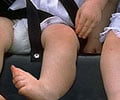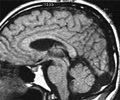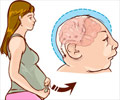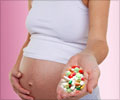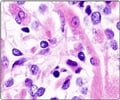Important information for health professionals and parents about the factors which may increase the likelihood of a baby being born with a birth defect was highlighted in new research.

In addition, the research team was also able to confirm that socio-economic status (levels of deprivation) had no effect on the relative risk of birth defects, despite two-thirds of the mothers participating in the study coming from the most deprived fifth of the British population. The data also showed that higher levels of maternal education halved the risk of having a baby with a defect across all ethnic groups.
It has been known for some time that birth defects, also known as congenital anomalies, are a major cause of infant mortality and that their incidence varies across ethnic groups in the UK. Other studies in the last 20 years have considered consanguinity (marriage to a blood relation), as a cause of birth defects, but these studies weren't able to rule out other potential risk factors, particularly the effects of deprivation.
Geneticist and lead author Dr Eamonn Sheridan, from the University of Leeds, says:"It is important to note that the vast majority of babies born to couples who are blood relatives are absolutely fine, and whilst consanguineous marriage increases the risk of birth defect from 3% to 6%, the absolute risk is still small."
The study, funded by the NIHR Collaboration for Leadership in Applied Health Research and Care (CLAHRC) for Leeds, York and Bradford, and the largest of its type ever conducted, examined detailed information collected about more than 11,300 babies involved in the Born in Bradford (BiB) project, a unique long term study which is following the health of babies who were born in the city at the Bradford Royal Infirmary between 2007 and 2011. The research team found that the overall rate of birth defects in the BiB babies was approximately 3% - nearly double the national rate.
Each year, approximately 1.7% of babies in England and Wales are born with a birth defect (for example heart or lung problems or recognised Syndromes such as Down's), which may be life-limiting. These disorders occur as a result of complex interactions between genetic and environmental factors, or because of damage done by infections such as rubella and cytomegalovirus.
Advertisement
In the Pakistani subgroup, 77% of babies born with birth defects were to parents who were in consanguineous marriages. In the White British subgroup 19% of babies with an anomaly were born to mothers over the age of 34. Links between the age of mothers and the prevalence of birth defects are already well-established.
Advertisement
The Bradford/Leeds study is the first that has been able to explore the potential causes of birth defects in a population where there are enough numbers in both consanguineous and non-consanguineous groups to reach reliable and statistically significant conclusions.
Professor Neil Small, co-author of the study from the University of Bradford, says: "The research is of particular importance to Bradford, because of the characteristics of its population. Half the babies born in the city's one maternity hospital have a parent whose family origins are in Pakistan. But the findings also have relevance to other areas of the UK and across the world in countries where consanguineous marriage is a cultural norm.
"In Bradford, there are initiatives that seek to raise community awareness and services such as genetic counselling and testing in place that can be accessed by couples who are married or considering marriage to a blood relative. It is not our intention to counsel couples about who they choose to marry. But we do want to ensure that couples are aware of any risks so that they can make informed choices when planning their families," says Professor Small.
Source-Eurekalert





